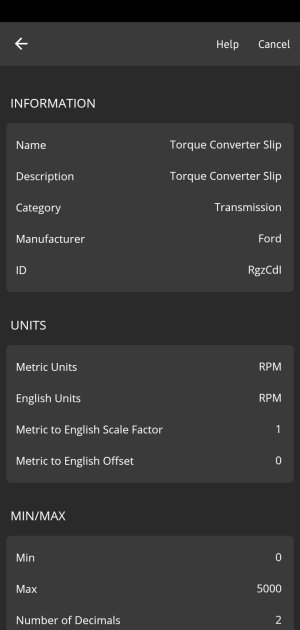1997ThunderbirdLXV6
Seasoned PostWhore
Inspired by @theterminator93 's response to @GRWeldon 's thread, I went ahead and added the Ford TC slip PID to my dashboard in OBD Fusion.
The Good
At steady cruising in 3rd or 4th over 40 mph, slip reads anywhere between 0 and 4 RPM, with rare spikes to 6 or 7 RPM. That sounds just about right.
At anything other than steady cruising, such as acceleration or driving in lower gears, slip fluctuates a lot, too much so to make exact sense of it, though it appears within an expected range (couple hundred RPM).
The Odd
Where the data falls apart is at a standstill. Logically, at 0 MPH, I would assume that TC slip should be = engine RPM. Wouldn't that make sense? Or am I missing something here?
Instead, the app shows TC slip at more than twice the engine RPM. Can anyone explain this? Or is it likely a programming mistake in the app?
I did take screen shots and can post them on request, but they really don't add any further intel.
The Good
At steady cruising in 3rd or 4th over 40 mph, slip reads anywhere between 0 and 4 RPM, with rare spikes to 6 or 7 RPM. That sounds just about right.
At anything other than steady cruising, such as acceleration or driving in lower gears, slip fluctuates a lot, too much so to make exact sense of it, though it appears within an expected range (couple hundred RPM).
The Odd
Where the data falls apart is at a standstill. Logically, at 0 MPH, I would assume that TC slip should be = engine RPM. Wouldn't that make sense? Or am I missing something here?
Instead, the app shows TC slip at more than twice the engine RPM. Can anyone explain this? Or is it likely a programming mistake in the app?
I did take screen shots and can post them on request, but they really don't add any further intel.


